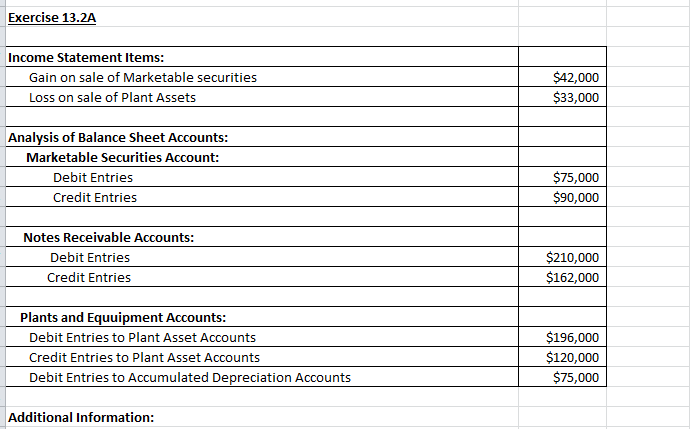
Moreover, marketable securities can come in the form of equity securities (e.g. ETFs, preferred shares) and debt investments (e.g. money market instruments). Marketable securities are typically included in the cash and cash equivalents line item, the first line item on the current assets section of the balance sheet. Cash reserves help deal with unforeseen challenges, act quickly on attractive acquisition opportunities, or settle financial obligations.
Where to find a company’s marketable securities
Equity securities are the equity in which the company sells its ownership to the public market. Equity securities holders are the owner of the companies (issuer) and will what gamestop gains and losses mean for your taxes benefit when the company makes a profit by receiving the dividend. The equity holders will have an influence on company strategy depending on the share percentage.
Common Examples of Marketable Securities
Apple, the most valued company of wall street, maintains a massive pile of these securities. Company X Inc. invests in US Treasury bonds having a maturity duration of 30 years in the financial year 2016. The company’s financial controller, Mr. Adam Smith, is in a dilemma as to whether those investments are to be classified as these securities or not. While their ease of sale makes them attractive, it’s important to remember that marketability doesn’t guarantee profitability. As with any investment, understanding the characteristics, risks, and market dynamics of marketable securities is key to using them effectively in a financial strategy. While unmarketable securities may offer potential benefits such as higher yields or tax advantages, they have significant drawbacks.
The Two Main Types of Marketable Securities

Remember that those are big numbers, far from chump change, but pale compared to Microsoft’s income of $72,738 million. But any extra the company or company can earn is better than nothing. Most companies earn most of their income from their core business, as Microsoft earns most of its income from computer hardware, cloud services, and other assorted products.
Debt Securities
Another characteristic of marketable securities is that they trade with relative ease on established markets. Marketable securities are financial instruments that actively trade on equity markets (e.g., the New York Stock Exchange, Nasdaq) and bond markets (e.g., money market, U.S. Treasury). The active trading of marketable securities allows buyers and sellers to have clear expectations of the market value range of these financial items.
- This content is for general information purposes only, and should not be used as a substitute for consultation with professional advisors.
- Marketable securities, particularly trading securities, are recorded at the time they are sold.
- Marketable debt securities are considered to be any short-term bond issued by a public company held by another company.
- Marketable equity securities can be either common stock or preferred stock.
Non-current assets (long-term assets)
In this article, we’ll take a closer look at everything to do with this financial instrument. Many types of derivatives can be considered marketable, such as futures, options, and stock rights and warrants. Derivatives are investments directly dependent on the value of other securities. In the last quarter of the 20th century, derivatives trading began growing exponentially.
Therefore, marketable securities enable companies to earn low-risk returns on their cash balances while remaining prepared for a sudden need for cash (i.e. “cushion”). The company has reported its marketable securities under current assets. Unmarketable securities are assets that often lack a ready secondary market, making them challenging to price and trade quickly. Market conditions can significantly impact the liquidity of securities. During times of market stress, even typically liquid assets may become harder to sell without accepting a substantial discount.
All companies look to maximize their cash, whether deploying it in assets that earn them a high return or in lower-yielding assets that remain safe but liquid. If it is expected that the stock is to be traded or liquidated within a year, the equity would be listed as a current asset by the company. This means that the cash isn’t idly sitting and the business can actually earn returns on it. But if there is a sudden need for this cash, the business can easily liquidate the securities and have the cash on hand again.
These types of investments can be debt securities or equity securities. Marketable debt securities are considered to be any short-term bond issued by a public company held by another company. Marketable debt securities are normally held by a company in lieu of cash, so it’s even more important that there is an established secondary market. All marketable debt securities are held at cost on a company’s balance sheet as a current asset until a gain or loss is realized upon the sale of the debt instrument.
This account is deemed to be temporary and is included in the calculation of net income and is closed into Retained Earnings. Held to maturity investments are reported on the balance sheet at their amortized cost, which is the cost of the investment adjusted with any discount or premium. These investments are not subject to mark-to-market accounting, so they will not fluctuate in value on market price.
